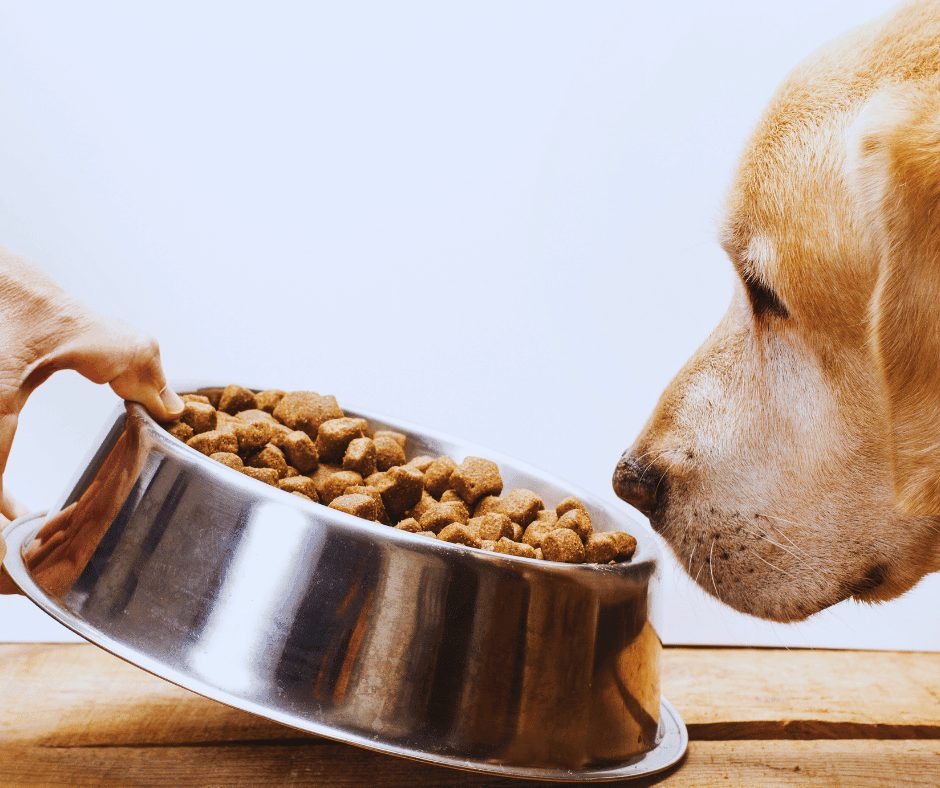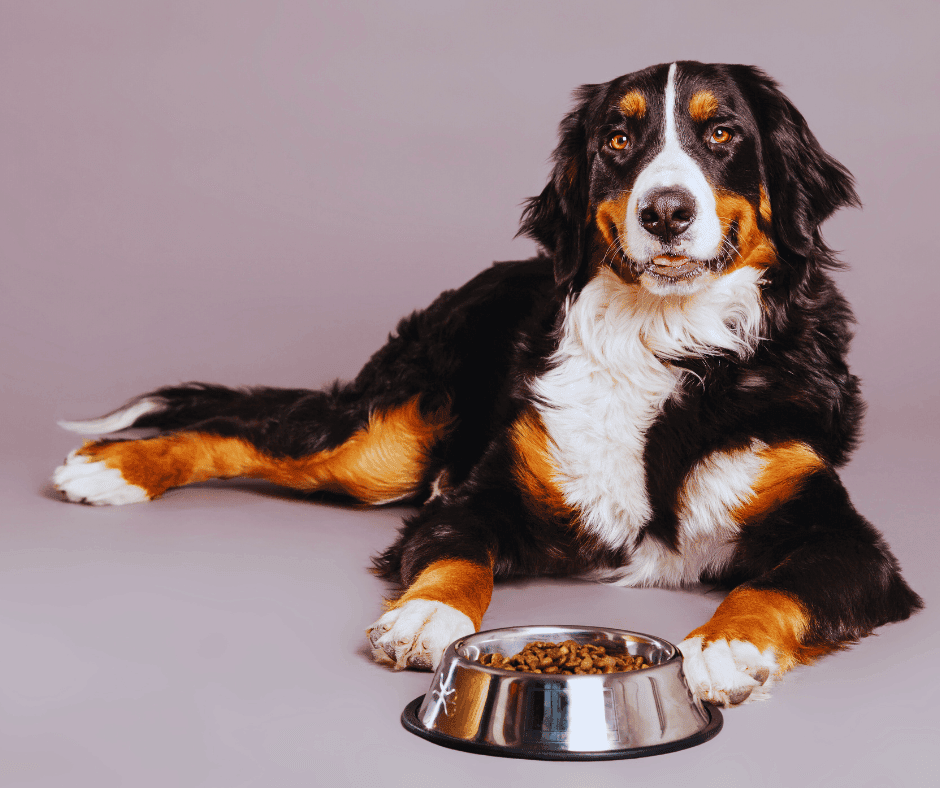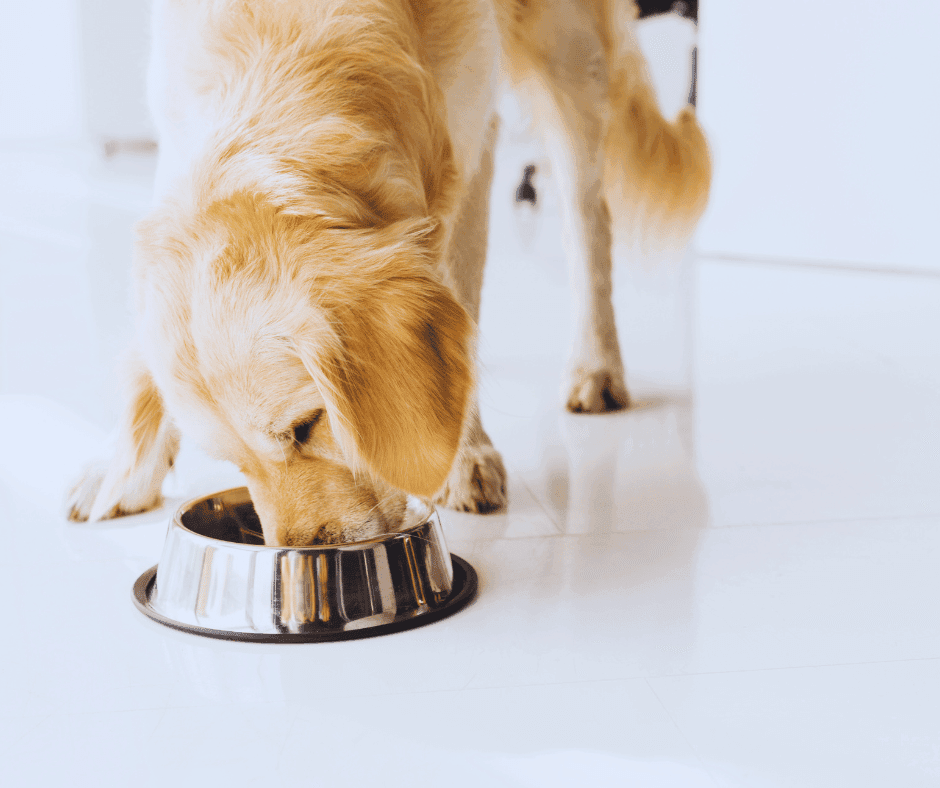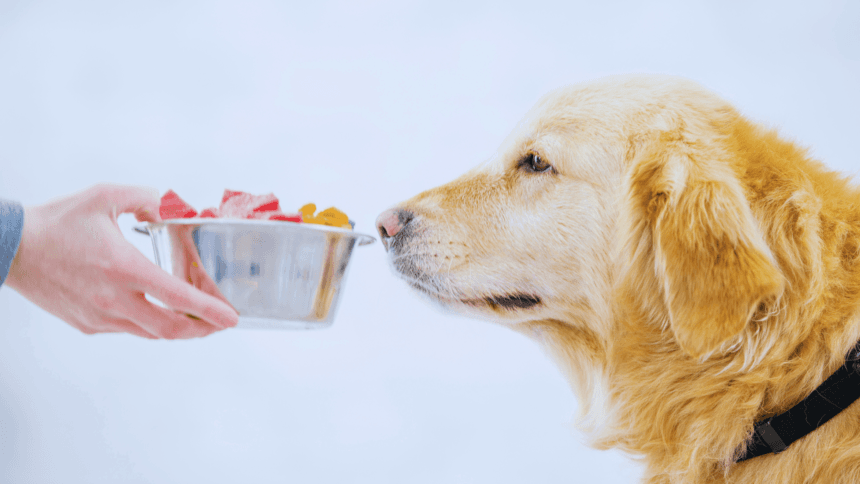Bringing home a giant breed puppy is an exciting journey filled with joy, challenges, and responsibilities. Among the key aspects of their care, choosing the right food stands out as a critical decision that impacts their growth, health, and overall well-being. Unlike smaller breeds, giant breed puppies require a specialized diet tailored to their unique growth rate and size.
Research indicates that improper nutrition in giant breed puppies can lead to serious health issues such as developmental orthopedic diseases (DOD), including hip dysplasia and osteochondrosis. A 2020 study published in the Journal of Veterinary Internal Medicine highlights the importance of a balanced calcium-to-phosphorus ratio and controlled caloric intake in reducing the risk of skeletal disorders in large and giant breed puppies.
A real-world example of this is the case of “Tom,” a Great Dane puppy whose owner, Laurence, unknowingly fed him high-calorie puppy food designed for smaller breeds. Within six months, Tom developed joint pain and an abnormal gait due to accelerated growth. After consulting a veterinarian and switching to a giant breed-specific diet, Tom’s condition improved significantly.
In this article, we’ll explore the critical factors in choosing the best food for your giant breed puppy, including nutritional requirements, common mistakes to avoid, and trusted brands that meet their unique dietary needs. This guide will empower you to make informed decisions for your furry friend, ensuring they grow into healthy and happy adults.
Why Nutrition Matters for Giant Breed Puppy

Welcoming a giant breed puppy into your home is a joy like no other. Breeds like Great Danes, Saint Bernards, and Mastiffs are adorable as pups, but they grow fast really fast. Their growth spurt is incredible, but it also brings unique challenges, especially when it comes to their diet. Feeding them the right food is more than just keeping them full; it’s about supporting their growth, health, and longevity.
Why Nutrition Is Key
Giant breed puppies can grow over 100 pounds in their first year. This rapid growth puts pressure on their bones and joints, making proper nutrition essential. An imbalance in their diet too many calories, too much calcium, or not enough nutrients can lead to serious health issues like hip dysplasia and joint pain.
For giant breed puppies, it’s all about balance. Too much calcium, and their bones might grow unevenly; too little, and they can end up weak. The magic ratio of calcium to phosphorus in their diet should hover around 1.2:1. That’s why foods designed for giant breeds are the safest bet—they’re specially formulated to keep this balance in check.
You might think more protein equals better growth, but that’s not entirely true for these big pups. Yes, they need enough protein to build strong muscles, but stuffing their food bowl with calorie-dense meals can cause them to gain weight too quickly. That extra weight puts unnecessary pressure on their joints, which can lead to long-term issues.
Key Nutritional Requirements for Giant Breed Puppies
Feeding a giant breed puppy isn’t just about filling their bowl—it’s about providing the right balance of nutrients to support steady growth, strong bones, and overall health. Let’s break down the essential nutritional requirements that every giant breed puppy needs.
| Nutrient | Role in Development | Optimal Range for Giant Breeds |
|---|---|---|
| Calories | Supports energy needs while preventing rapid growth that stresses bones and joints. | Moderate calorie levels |
| Protein | Builds strong muscles and supports overall development. | 22–26% |
| Fat | Provides energy and supports healthy skin and coat. | 8–12% |
| Calcium | Essential for strong bone growth but must be carefully controlled to prevent skeletal disorders. | 0.8–1.2% |
| Phosphorus | Works with calcium to support proper bone development. | 0.6–1% |
| Calcium-to-Phosphorus Ratio | Ensures balanced bone growth. | 1.2:1 to 1.4:1 |
| DHA (Omega-3 Fatty Acids) | Supports brain development and vision. | Found in fish oil or supplements |
| Fiber | Aids in digestion and prevents issues like bloating, common in giant breeds. | 3–5% |
Why These Nutrients Matter
- Controlled Growth: Overfeeding calories or nutrients can accelerate growth, leading to joint and bone issues like hip dysplasia or osteochondrosis. Balanced diets prevent these risks.
- Strong Bones: Calcium and phosphorus are essential, but the ratio matters. Too much calcium can cause uneven bone growth, while an imbalance with phosphorus can weaken the skeletal structure.
- Brain and Eye Development: DHA, found in fish oil, is crucial for cognitive function and sharp vision, ensuring your pup learns and interacts well with the world around them.
- Digestive Health: Giant breed puppies are prone to bloating, a life-threatening condition. Proper fiber levels can support digestion and reduce this risk.
Giant Breed Puppy Food vs. Regular Puppy Food
| Feature | Giant Breed Puppy Food | Regular Puppy Food |
|---|---|---|
| Caloric Density | Lower to prevent rapid weight gain. | Higher for smaller, active breeds. |
| Calcium-to-Phosphorus Ratio | Precisely balanced for steady growth. | May exceed safe levels for large breeds. |
| Protein Content | Moderate to avoid excessive growth. | Higher for quick energy needs. |
Feeding your giant breed puppy a diet tailored to their needs helps them grow at a healthy pace, reducing the risk of lifelong health problems. Next, we’ll discuss common feeding mistakes and how to avoid them.
Features to Look for in Giant Breed Puppy Food

Selecting the right food for your giant breed puppy is crucial for their development and long-term health. Here are the key features to look for in their diet to ensure it meets their unique needs:
1. Age-Specific Formulas
Choose food specifically labeled for “large breed puppies.” These formulas are designed with their growth patterns in mind, offering balanced nutrition that supports steady development rather than rapid growth. Rapid growth can lead to joint problems and other skeletal issues.
Tip: Avoid switching to adult food too soon. Giant breeds may need puppy food for up to 18–24 months, depending on the breed and size.
2. Natural Ingredients
Look for foods made with whole, minimally processed ingredients. High-quality proteins like chicken, lamb, or fish, along with whole grains, fruits, and vegetables, provide essential nutrients and are easier for puppies to digest.
Why It Matters: Puppies fed natural diets are less likely to develop food sensitivities and benefit from better coat health and overall vitality.
3. Controlled Calcium Levels
A balanced calcium-to-phosphorus ratio (between 1.2:1 and 1.4:1) is critical for proper bone growth. Excess calcium can cause skeletal deformities, while too little can weaken bones. Foods designed for giant breeds are carefully formulated to maintain this balance.
Did You Know? Studies show that giant breed puppies consuming too much calcium are at a higher risk for developmental orthopedic diseases (DOD).
4. Avoid Fillers
Steer clear of foods containing corn, soy, wheat, or artificial additives. These fillers provide little nutritional value and can contribute to weight gain or digestive problems. Instead, prioritize foods with high-quality protein and complex carbohydrates for sustained energy.
Why to Avoid Fillers: Fillers can cause bloating—a potentially life-threatening condition for giant breeds—and may lead to allergies or sensitivities.
5. AAFCO Certification
Always check the label for AAFCO (Association of American Feed Control Officials) certification. This ensures the food meets the minimum nutritional requirements for growth and development in puppies.
Quick Tip: Look for the statement “Complete and Balanced” on the packaging, which signifies AAFCO compliance.
Types of Food: Pros and Cons

Choosing the right type of food for your giant breed puppy is just as important as selecting a high-quality formula. Different types of food have their own advantages and disadvantages, depending on your puppy’s needs and your lifestyle. Let’s explore the options:
1. Dry Kibble
Pros:
- Dental Benefits: Helps reduce plaque buildup, promoting better oral health.
- Cost-Effective: Generally more affordable than wet or raw food.
- Convenience: Easy to store, with a long shelf life.
- Nutritional Balance: Many kibble options are specially formulated for giant breed puppies.
Cons:
- Palatability: May not appeal to picky eaters.
- Moisture Content: Low moisture can be less hydrating, requiring ample water intake.
Best For: Owners seeking convenience and affordability without compromising nutrition.
2. Wet Food
Pros:
- Palatability: Higher moisture content and richer flavor make it appealing to picky eaters.
- Hydration: Helps supplement water intake, especially for puppies that drink less.
- Gentle on Digestion: Easier for some puppies with sensitive stomachs to digest.
Cons:
- Cost: Typically more expensive than kibble.
- Dental Health: Lacks the abrasive texture to clean teeth, which may increase plaque buildup.
- Storage: Requires refrigeration after opening and has a shorter shelf life.
Best For: Picky eaters or puppies with specific hydration needs.
3. Raw Diets
Pros:
- Nutrient-Rich: Can provide natural, unprocessed nutrients.
- Customizable: Allows owners to tailor meals to their puppy’s specific needs.
- Potential Health Benefits: Some owners report shinier coats and improved energy levels.
Cons:
- Health Risks: Improper handling can expose puppies to harmful bacteria like Salmonella or E. coli.
- Balancing Nutrients: Requires precise planning to avoid deficiencies.
- Cost and Time: Can be expensive and time-consuming to prepare.
Important Note: Consult your vet before starting a raw diet to ensure it meets your puppy’s unique needs.
4. Homemade Food
Pros:
- Customization: Total control over ingredients, which is great for puppies with allergies or sensitivities.
- Transparency: You know exactly what your puppy is eating.
Cons:
- Nutritional Imbalance: Without a vet-approved recipe, it’s easy to miss essential nutrients.
- Time-Consuming: Preparing balanced meals requires time and effort.
- Cost: High-quality ingredients can make homemade meals expensive.
Best For: Owners willing to consult with a vet or pet nutritionist to ensure balanced meals.
How to Transition to a New Food
Switching your giant breed puppy’s diet requires a thoughtful approach to avoid upsetting their sensitive stomachs. A sudden change can lead to digestive issues like diarrhea or vomiting, so it’s crucial to transition gradually. Here’s how to do it right:
Step-by-Step Transition Plan
| Day | Old Food | New Food | Notes |
|---|---|---|---|
| Day 1–2 | 75% | 25% | Introduce a small amount of the new food. Watch for any reactions like upset stomach. |
| Day 3–4 | 50% | 50% | Gradually increase the portion of the new food. Ensure your puppy is eating well. |
| Day 5–6 | 25% | 75% | By now, your puppy should be more accustomed to the new food. Monitor digestion closely. |
| Day 7 | 0% | 100% | Fully transition to the new food. Ensure your puppy is happy and healthy with the switch. |
Tips for a Smooth Transition
- Monitor Digestive Health
During the transition, watch for signs of upset stomach, such as diarrhea, vomiting, or reduced appetite. If these occur, slow down the transition and allow more time at each stage. - Mix Gradually
Always mix the old and new food thoroughly to prevent your puppy from picking out only the old or new food. - Stick to a Feeding Schedule
Feed your puppy at the same times each day. Consistency helps them adjust to the new food and reduces digestive stress. - Hydration is Key
Ensure your puppy has access to fresh water at all times, as new foods may alter their hydration needs. - Avoid Mixing Too Many Foods
Transitioning to one food at a time is best. Adding multiple new foods can confuse your puppy’s digestive system.
When to Consult Your Vet
- If your puppy shows prolonged signs of digestive upset (more than 3–4 days).
- If they develop allergic reactions like itching, swelling, or changes in stool.
- To get guidance on selecting the right food or supplements.
Transitioning your giant breed puppy to a new food may take some time, but it’s a key step in ensuring they adapt well and grow healthily. Patience and observation are your best tools during this process!
Conclusion
Choosing the right food for your giant breed puppy is one of the most important decisions you’ll make as a pet owner. The proper diet supports healthy growth, strong bones, and a happy, active life. With their unique nutritional needs, giant breed puppies require food specifically designed for their size and developmental stage. From controlling calcium levels to selecting high-quality ingredients, every detail matters.
To ensure the best start in life, always consult your veterinarian for personalized food recommendations that suit your puppy’s needs. They can provide valuable insights based on your puppy’s health, age, and breed characteristics.
Start giving your puppy the best chance at a healthy life choose their food wisely! With the right nutrition, your giant breed puppy will grow into a strong, healthy companion for years to come.
Frequently Asked Questions (FAQs)
How much should I feed my giant breed puppy?
The amount of food your giant breed puppy needs will depend on their age, weight, activity level, and the specific food you’re feeding. Generally, you should follow the guidelines provided on the food packaging, but keep in mind that these are just starting points. You can adjust the portion size as your puppy grows, based on their appetite and body condition. It’s also helpful to consult your vet to ensure you’re meeting your puppy’s specific nutritional needs.
Can I give supplements with their food?
Supplements may be necessary if your giant breed puppy has specific health concerns or if their diet is lacking in certain nutrients. However, it’s essential to be cautious with supplements, as over-supplementing particularly with calcium can lead to health issues. Always consult your vet before introducing any supplements, as they can help you determine if your puppy truly needs them and suggest the appropriate dosage.
When should I transition my puppy to adult food?
Giant breed puppies typically transition to adult food later than smaller breeds. Most experts recommend waiting until your puppy is between 18 to 24 months old, as this is when they have typically finished growing. Transitioning too early can lead to nutritional imbalances, particularly in bone development. Always consult your vet to determine the ideal time for your specific puppy, as factors like breed size and growth rate can affect the transition.

